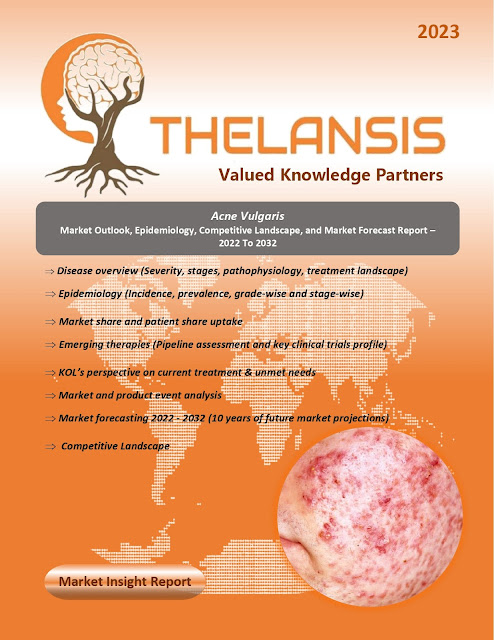Paroxysmal Atrial Fibrillation (PAF) – Market Outlook, Epidemiology, Competitive Landscape, and Market Forecast Report – 2023 To 2033
Paroxysmal atrial fibrillation (PAF) constitutes a form of cardiac arrhythmia distinguished by irregular and frequently rapid atrial contractions. Atrial fibrillation (AF) entails the disruption of coherent electrical signaling that orchestrates the heart's rhythmicity, culminating in an accelerated and erratic heart rate. The "paroxysmal" descriptor pertains to the sporadic manifestation of this ailment, denoting the abrupt onset and cessation of episodes of irregular cardiac activity. The clinical manifestations of PAF exhibit notable variability. While certain individuals might remain asymptomatic, others may encounter sensations of palpitations, rapid or erratic heartbeat, vertigo, dyspnea, fatigue, and thoracic discomfort. In certain instances, untreated PAF might give rise to severe complications such as stroke, particularly if the condition is not subjected to intervention. Predisposing Factors:
- Age-linked fibrotic changes in cardiac tissue
- Diabetes mellitus
- Obesity
- Metabolic syndrome
- Obstructive sleep apnea
- Chronic kidney disease
- Vigorous physical exercise
- Genetic predisposition
AF's fundamental mechanism is predicated upon a multifaceted interplay between inciting factors and a conducive substrate. Inciting factors are accountable for initiating the arrhythmic episode, while the substrate sustains the ongoing arrhythmia. Inciting factors emerge when the action potential triggers after-depolarizations of sufficient magnitude to override the recuperating repolarization process. This after-depolarization may induce additional systolic contractions but is inadequate to uphold persistent arrhythmia. However, the impulses arising from such extra contractions are discharged at a heightened frequency. Upon impinging on myocardial tissue characterized by varying excitability or refractory periods, these impulses give rise to functionally obstructive electrical barriers. Consequently, re-entry circuits manifest, subsequently engendering fresh impulse waves that propagate additional re-entry circuits, thereby perpetuating the persistence of the arrhythmia by surmounting these barriers. The prevalent locus for ectopic foci and initiation of inciting factors is the muscular sleeve of the left atrium extending into the pulmonary vein. Myocardial cells within this region exhibit a diminished refractory period relative to neighboring myocardium in patients free from AF. Pulmonary vein isolation (PVI) carried out during catheter ablation procedures for AF seeks to insulate this region from the contiguous myocardium, thus thwarting further propagation of AF. The diagnostic approach for PAF conventionally entails electrocardiographic (ECG or EKG) recordings, capturing the heart's electric patterns. Therapeutic strategies for PAF are oriented toward heart rate regulation, restoration of normal rhythm, and mitigation of underlying risk factors. The absence of appropriate intervention could subject paroxysmal atrial fibrillation to the risk of complications, notably an elevated susceptibility to stroke. This peril emanates from the potential for clot formation within the atria, subsequent embolization to the cerebral vasculature, precipitating a stroke.
Thelansis’s “Paroxysmal Atrial Fibrillation (PAF) Market Outlook, Epidemiology, Competitive Landscape, and Market Forecast Report – 2023 To 2033" covers disease overview, epidemiology, drug utilization, prescription share analysis, competitive landscape, clinical practice, regulatory landscape, patient share, market uptake, market forecast, and key market insights under the potential Paroxysmal Atrial Fibrillation (PAF) treatment modalities options for eight major markets (USA, Germany, France, Italy, Spain, UK, Japan, and China).
KOLs insights of Paroxysmal Atrial Fibrillation (PAF) across 8 MM market from the centre of Excellence/ Public/ Private hospitals participated in the study. Insights around current treatment landscape, epidemiology, clinical characteristics, future treatment paradigm, and Unmet needs.
Paroxysmal Atrial Fibrillation (PAF) Market Forecast Patient Based Forecast Model (MS. Excel Based Automated Dashboard), which Data Inputs with sourcing, Market Event, and Product Event, Country specific Forecast Model, Market uptake and patient share uptake, Attribute Analysis, Analog Analysis, Disease burden, and pricing scenario, Summary, and Insights.
Thelansis Competitive Intelligence (CI) practice has been established based on a deep understanding of the pharma/biotech business environment to provide an optimized support system to all levels of the decision-making process. It enables business leaders in forward-thinking and proactive decision-making. Thelansis supports scientific and commercial teams in seamless CI support by creating an AI/ ML-based technology-driven platform that manages the data flow from primary and secondary sources.
_page-0001.jpg)


%20Market%20Outlook%20and%20Forecast.webp)
Comments
Post a Comment